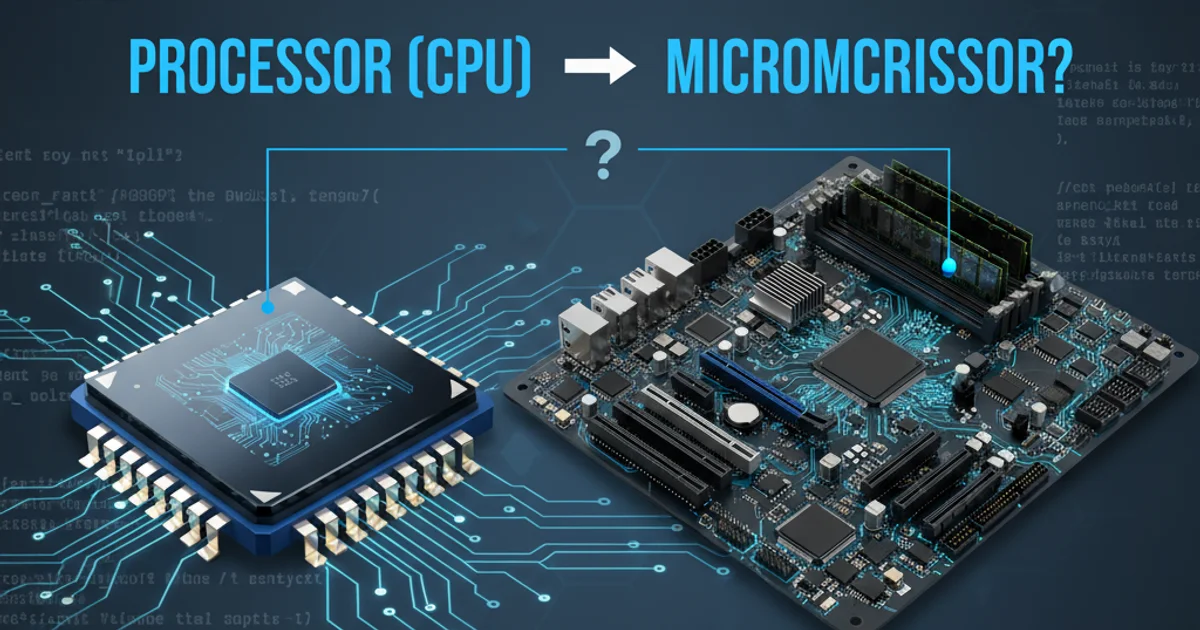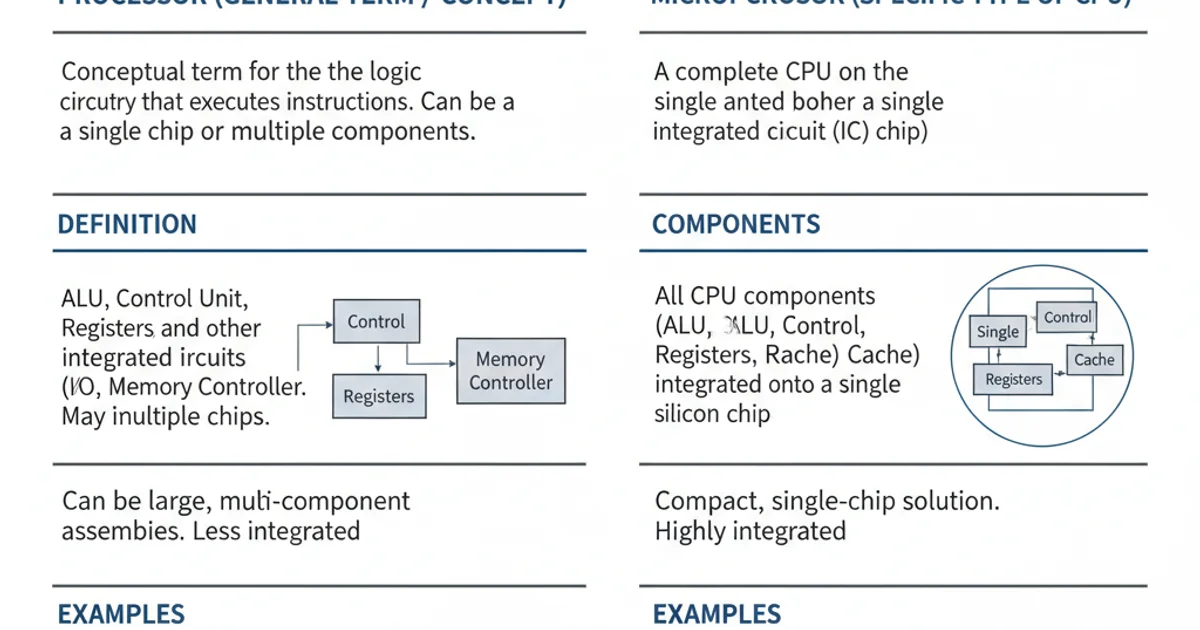What is the difference between processor (CPU) and microprocessor?
Categories:
Processor (CPU) vs. Microprocessor: Understanding the Core Differences

Explore the fundamental distinctions between a general 'processor' and a 'microprocessor,' their evolution, components, and applications in modern computing.
In the realm of computing, the terms 'processor' and 'microprocessor' are often used interchangeably, leading to confusion. While closely related, they represent distinct concepts with different scopes and historical contexts. Understanding their differences is crucial for anyone delving into computer architecture, embedded systems, or even just appreciating how modern electronics work. This article will clarify these terms, trace their evolution, and highlight their respective roles.
What is a Processor?
A processor is a broad term that refers to any logical circuit that responds to and processes the basic instructions that drive a computer. It's the 'brain' of any computational device, responsible for executing arithmetic, logical, control, and input/output (I/O) operations. Historically, processors were built using discrete components like vacuum tubes, transistors, and later, multiple integrated circuits (ICs) on a circuit board. They could occupy entire rooms or large sections of a board.
Key characteristics of a processor (in its general sense) include:
- Instruction Set Architecture (ISA): The set of commands it understands.
- Control Unit (CU): Manages and coordinates the processor's operations.
- Arithmetic Logic Unit (ALU): Performs arithmetic and logical operations.
- Registers: Small, fast storage locations within the processor for temporary data.
Processors are not necessarily single-chip entities; they can be composed of multiple chips or even discrete components working together to perform processing tasks.
What is a Microprocessor?
A microprocessor is a specific type of processor where the entire processing unit (CPU) is contained on a single integrated circuit (IC) chip. This miniaturization was a revolutionary step in computing, enabling the creation of smaller, more powerful, and more affordable computers. The advent of the microprocessor in the early 1970s (with Intel's 4004 being a seminal example) paved the way for personal computers, embedded systems, and nearly all modern electronic devices.
While a microprocessor performs the same core functions as any processor (executing instructions, performing calculations), its defining characteristic is its monolithic integration. It typically includes the ALU, control unit, and registers all on one chip. Modern microprocessors, like those found in your laptop or smartphone, are incredibly complex, often containing billions of transistors and incorporating multiple processing cores, cache memory, and sometimes even integrated graphics processing units (GPUs).
Key features of a microprocessor:
- Single-chip design: All core processing components on one IC.
- High integration: Combines ALU, CU, registers, and often cache memory.
- Scalability: Can be combined with other chips (memory, I/O controllers) to form a complete computer system.
- Ubiquity: Found in almost every electronic device today.
flowchart TD
A[Processor (General Term)] --> B{Composed of?}
B -->|Multiple Discrete Components| C[Early Computers (e.g., ENIAC)]
B -->|Multiple ICs on a Board| D[Minicomputers, Early Mainframes]
B -->|Single Integrated Circuit (IC)| E[Microprocessor]
E --> F[Personal Computers]
E --> G[Smartphones]
E --> H[Embedded Systems]
C & D & E --> I[Executes Instructions]
I --> J[Performs Arithmetic/Logic]
I --> K[Manages Control Flow]
style A fill:#f9f,stroke:#333,stroke-width:2px
style E fill:#ccf,stroke:#333,stroke-width:2pxRelationship between a general processor and a microprocessor
Key Differences Summarized
The distinction boils down to scope and physical implementation:
- Scope: 'Processor' is a broader, more general term for any unit that processes instructions. 'Microprocessor' is a specific type of processor.
- Physical Implementation: A processor can be made of multiple discrete components or multiple ICs. A microprocessor must be a single integrated circuit chip.
- Evolution: All microprocessors are processors, but not all processors are microprocessors. The microprocessor is an evolution of the processor concept, driven by advancements in integrated circuit technology.
- Complexity & Size: Early processors were large and complex assemblies. Microprocessors allowed for unprecedented miniaturization and increased complexity within a tiny footprint.
Today, when people refer to the 'processor' in a modern computer, they are almost invariably referring to a 'microprocessor' (specifically, a Central Processing Unit or CPU, which is a type of microprocessor). However, it's important to remember the historical and technical nuances.

Comparative overview of Processor vs. Microprocessor